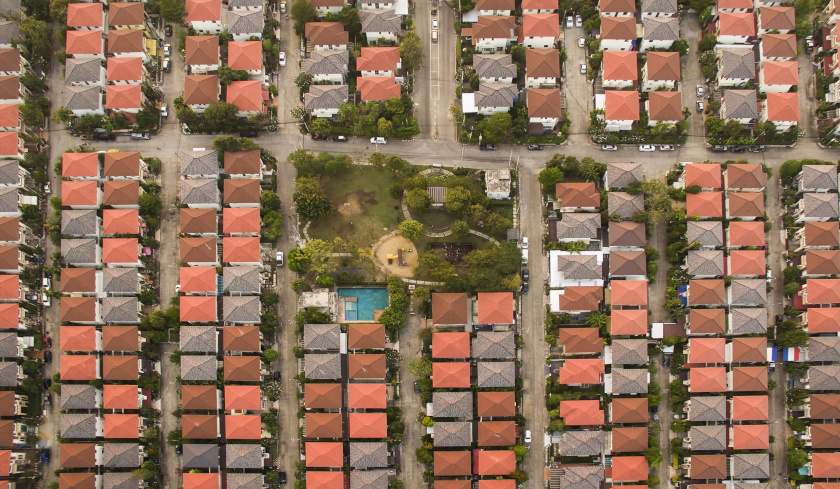Positive v negative gearing: What property investors should know
In property investment, ‘gearing’ means taking out a loan or borrowing money to purchase a real estate asset. Should investors aim for properties that are positively geared or negatively geared?

What is positive gearing?
Simply put, a property is positively geared if the income from the investment is higher than the interest and other expenses. Therefore, the investor benefits from a consistent cash flow as well as a safety cash buffer. The extra money will have to be paid for as part of tax on additional net income.
If the property’s value increases considerably from the purchase date to the sale date, the investor may also enjoy significant capital gain.
With a higher income, the investor can also start saving up for another deposit and ultimately grow their property portfolio. Alternatively, they can use the profit to pay down the principal on their mortgage.
Positively geared properties are also referred to as ‘cash flow properties’ due to the income they generate.
As such, investors are less likely to be forced to sell under pressure because their property essentially pays for itself. Moreover, the additional income improves their serviceability and, thus, increases their chances to be offered different home loan options by different lenders.
Still investors are reminded to be wary of the risks of being too focused on chasing cash flow.
According to property expert Margaret Lomas: “If the property is too positively cash flowing, very often, that could be because it exists in an area where the positive cash flow is there because of the high demand for rental but not a lot of demand for buying. Therefore, it might not grow in value.”
What is negative gearing?
On the other hand, negative gearing occurs when the interest and other expenses that the investor is paying is more than the income or rental return that the property generates – meaning, they are essentially making a loss.
Some investors are willing to accept the loss if they are confident about the capital growth that the property will achieve in the future, which will allow them to offset their losses by their property’s capital appreciation.
For instance: A $400,000-house may grow by 10 per cent within a couple of years.
If you’re paying $25,000 in interest and earning $19,200 in rent, your $5,800-loss can be offset by the $40,000 you earned in additional property value. If interest rates don’t rise significantly and the market delivers strong growth, investors could cover the loss they have acquired through time.
Further, an investment loss means that they can reduce their taxable income and, therefore, the amount of tax that they pay. In some cases, the tax savings can exceed the loss of the negatively geared property.
However, unlike investors with positive geared properties, those with negatively geared properties will have to find another source of income to be able to fund the expenses and ultimately continue holding their property.
Negative gearing as a ‘strategy’
A popular tax minimisation strategy, negative gearing often attract investors due to the tax benefits of an investment loss.
By implementing negative gearing as a strategy, the property-related costs are, in essence, paid for by your tenant through rental returns, by the Australian Taxation Office through tax savings and by your own surplus cash flow.
Still, experts remind investors that it is not advisable to invest in property solely for tax purposes.
While tax deductions are welcome benefits, they should not be a main consideration for purchasing a property for investment. At the end of the day, property investment is all about increasing income and the overall return on investment.
With negatively geared properties, investors reduce tax because their income is reduced.
According to Propertyology’s Simon Pressley, investors must look at negative gearing in the same way that they look at stamp duty and land tax – as tax policies.
“If you’re negative gearing, you’ve lost money,” Mr Pressley reiterated.
Only investors who have enough cash flow to cover their losses and fund their expenses are encouraged to acquire negatively geared properties. Otherwise, they may be forced to sell their property before seeing significant capital growth, particularly when rates go up and they can’t offset the added expense simply by increasing rent.
Due to the higher financial risks that come with negatively geared properties, investors often incorporate them into a long-term wealth-creation strategy.
Smart Property Investment’s Phil Tarrant said: “What I would say is if you’re investing in property, initially you will probably find that your property is negatively geared, and as it matures over time as an asset it will turn into a more neutrally geared position.
“Now, it’s all circumstance to you, what you do for a living, how much you get paid, what your wealth situation is and how much deposit you have and what sort of mortgage you get, all these different things will influence whether or not your property is positively geared or negatively geared.”
At the end of the day, it’s important that investors aim for balance between cash flow and capital growth in their portfolio.
“Cash flow is what keeps you in the market and growth is what allows you to one day have more assets under your belt to give you those choices in retirement and potentially get out of the market,” Ms Lomas concluded.
This information has been sourced from Australian Securities and Investments Commission (ASIC), National Australia Bank (NAB) and the Smart Property Investment website.
